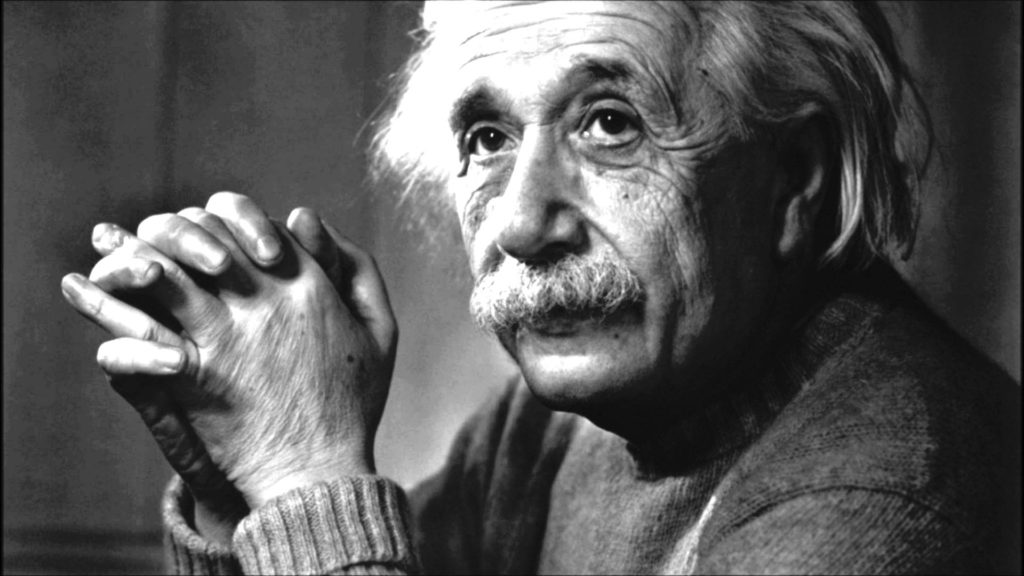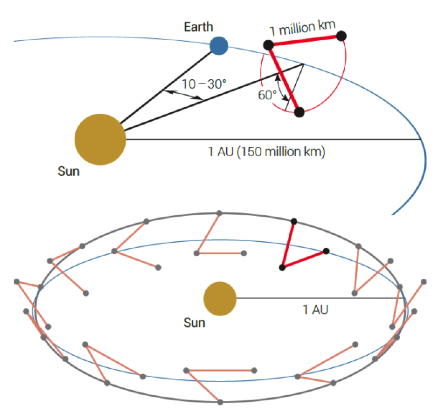Image: https://i.ytimg.com/vi/gTlpJ9ue04w/maxresdefault.jpgrom
Albert Einstein has become an icon in the physics and astronomy communities, and one of his greatest contributions has been that most elusive and complex theory – ‘The Theory of Relativity’, which has predicted the presence of many things in the still ‘less-understood’ Universe. The most bizarre of these predictions is the existence of Gravitational Waves – which were recently discovered. Einstein stands correct once again!
In order to understand what Gravitational Waves actually are, lets perform a small thought experiment. Imagine a very flexible rubber sheet that you can spread tight and taut. If you place a bowling ball over this sheet, it will create a dent in the surface. Now, if you place a tennis ball in nearby vicinity, it will create a comparatively smaller dent, and will begin to revolve around the bowling ball (try it at home, but be careful: bowling balls can be really heavy sometimes). Well, something similar to this scenario applies to our model of the Universe. Objects of heavy mass create higher levels of ‘distortion’ (a larger dent) in the fabric of space-time than lighter masses. These masses are in constant motion and when they accelerate, ripples of waves are formed in the space-time fabric and these are nothing but – The Gravitational Waves!
Over the last few years, enormous efforts have been made to detect these very weak waves in order to ‘see’ the universe from a gravitational perspective, as electromagnetic radiation offers a different view on the universe. This is because gravitational waves are thought to pass through all matter unhindered, which means that observing them will offer a new glance at the super massive objects or events happening in the Universe, or even the Universe’s very origin – The Big Bang.
Currently, LIGO, the earth based detector, has been in the news ever since it confirmed that they have finally detected these gravitational waves. It has been hailed as the discovery of the century (I might be going out of the limb here, but it is huge!). The main problem faced by the land based gravitational wave detectors like LIGO is the background noise from Earth, caused by the likes of waves, human interference, mining and construction, and even seismic activity. These interferences limit the sensitivity of the detectors on earth and so, in order to conduct a more effective search for gravitational waves, the concept of space-based detectors was born, which ultimately led to creation of Evolved Laser Interferometer Space Antenna (eLISA). It is the first space-bound gravitational wave detector set to be launched by 2034 by the European Space Agency (ESA). It is supposed to detect thousands of sources by using gravitational waves and, since it’s in space, the detector can have gigantically long arms so as to increase the sensitivity further.
It has been designed to form an equilateral triangle made up of three separate space-crafts, with one of them functioning as a “mother” craft and two others as “daughters”. They are supposed to have an arm length of one million kilometers. The entire detector will take up an orbit around the Sun, following Earth by twenty degrees. This first massive detector will basically measure these waves by checking the distortion in the space-time contained within the arms of the detectors (millions of kilometers). The measurement of the distortions in space-time would be carried out using interferometer methods – the use of lasers at every arm of the triangle.
Special algorithms have been developed by NASA and ESA over the decades to identify and classify tens of thousands of different sources detected by eLISA over time. Results have shown that sources can be successfully classified every time and this is being currently tested in the LISA pathfinder, a space-craft which was launched in December 2015 to test the techniques developed for eLISA.
By 2030, knowledge of Universe will have greatly changed and the addition of a new detector would assist this process enormously. Currently electromagnetic radiation detectors can help us see the Universe, but the window they give us is somewhat limited. However, with the advent of gravitational wave detectors, our ability to ‘hear’ the Universe will increase manifold and give us a valuable insight to the origins of… well, everything. Astronomical science would change drastically, and we’d even come to understand more about the mysterious ‘dark’ Universe, all due to the gravitational waves. Finding them was just the first step!
By Prarthana Desai



